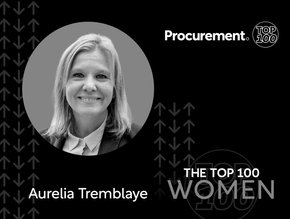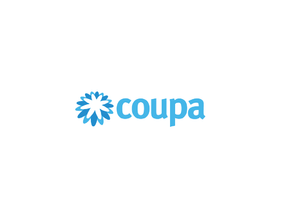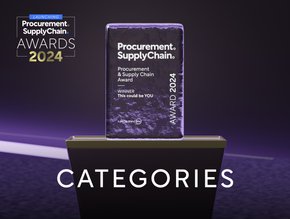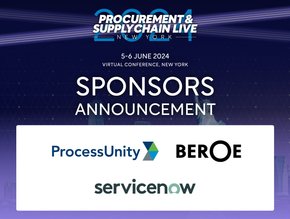Businesses Need a CLM Designed for Procurement — Not Legal

“Procurement” may be a fairly new term by today’s definition, but people have been in procurement roles for about as long as society itself has existed. Like the first markets and bazaars that appeared as early as 3000 BCE, humans have always sought the best products from the best sources.
But unlike ancient times, the world of business is now global, digital, and constantly cycling-in new or better choices. We live in an age where everyone is constantly searching for the best possible solutions, from the best suppliers, at the best price.
This means that we also live in an age of contracts.
And as the demand for more outsourcing grows, the volume of contracts grows with it. This legally-binding agreement is the only point of reference an organisation has when negotiating or reviewing the supplier’s performance. Without a solid contract, organisations set themselves up for supplier-related failure.
Today, the average company holds between 20,000 and 40,000 contracts according to World Commerce & Contracting. With so much riding on these contracts, ensuring they are managed properly is critical to organisational success. Sometimes, that means using a specialised contract management software. Other times, it means using intranet-based file storage — or even worse, spreadsheets.
Either way, most solutions used for keeping contracts in check aren’t what procurement teams need in the first place. That’s because the majority of Contract Lifecycle Management (CLM) tools were designed for legal teams.
Taken at face value, organisations might not see the problems this brings. But in fact, a CLM that was built with Legal in mind, can seriously throw a wrench into your procurement operations. So how did things get this way?
This article explores the history and evolution of CLMs, timely procurement challenges and trends, and why using a CLM that was created specifically for procurement teams is so important to organisational success.
A Brief History of Contract Lifecycle Management
The evolution of Contract Lifecycle Management (CLM) can be traced back about as far as commerce itself. Before paper and ink (not to mention literacy) became widespread, people created contracts using all sorts of mediums: hieroglyphs, stone tablets, verbal agreements - you name it.
But for several thousand years, formally written contracts have been created for people to do business with one another. As far back as 10,000 BCE, Mesopotamians were writing contracts for a variety of agreements, including sales and purchase agreements, partnership agreements, marriage and divorce agreements, employment and labour contracts and more.
From there, written contracts emerged on a global scale, with contract law becoming recognised and strictly enforced by civilisations throughout the world.
Skipping ahead to more modern times, the world of contracts is all about digitisation. After the technology boom, nearly all companies had shifted to a computer-based workplace. The birth of email and the Internet as we know it, was born.
It only makes sense that business best practices, including contract management, would evolve to a digital-first model. After all, a digital contract is more easily edited, shared and stored.
Enter the birth of the CLM.
While it’s not clear where the first official CLM originated, we know it was created as a more sophisticated alternative to local file sharing methods. Frustrated with infinite email chains and disorganised, often-inaccurate spreadsheets, a software-based solution for managing contracts became a necessary tool in the workplace.
This new tool was created to help manage contracts throughout each stage of their lifecycle:
- Creation
- Negotiation
- Approval/Execution
- Performance Monitoring
- Review (for renewal or termination)
However, when CLMs first hit the scene, contracts were really only being managed by legal teams. Procurement as we know it today still existed, though it often wasn’t recognised as its own integral aspect of an organisation.
Instead, CLMs were simply made for teams of corporate lawyers to be able to form, sign and store contracts in a digital database. That means these contracts were not easily searchable (i.e. locating key stakeholders or renewal dates), and their details or metadata couldn’t be analysed.
A CLM designed for legal teams might keep your contracts digitised, but it effectively places them into a virtual filing cabinet — meaning any insights must be searched for and extracted manually. No thanks.
Even today, with procurement being a more established sector, most CLMs are still designed for legal teams. That’s why Terzo’s contract management software was specially created for the “buy-side” of the business. With Terzo’s CLM v.2.0, your contracts aren’t just digitised; they’re optimized.
A few features of Terzo’s AI-driven CLM include:
- Sophisticated OCR-powered search capabilities for extracting key data points
- Detailed insights on spend, renewal dates, ESG goals
- Integration with applications such as Workday, Microsoft, SAP Ariba, and more
- Clear, customisable and user-friendly dashboards for insights at a glance
All of these features were designed to improve enterprise operations from a procurement lens. And with the challenges today’s procurement professionals face, they need all the help they can get.
The Current Procurement Landscape
Between complex supply chains, a shift towards subscription models and a global marketplace, procurement leaders are often sifting for the needle in a haystack of lacklustre suppliers. Those in procurement roles have the challenging yet essential role of not only finding the right vendors to work with, but monitoring that relationship to determine whether or not the contract should be renewed or terminated.
Within the procurement arena sits the Vendor Management Office (VMO). Simply put, the VMO is the internal department within an organisation that evaluates third-party providers of products and services, manages long-term partnerships and supervises day-to-day vendor interactions.
The VMO is the part of a business which handles supply chain issues — something we are all a bit too familiar with since 2020.
A recent Ernst & Young survey assessed the post-COVID-19 supply chain disruptions of over 200 organizations in the United States. The survey found that after the pandemic hit, “Serious disruptions affected 57%, with 72% reporting a negative effect (17% reported a significant negative effect, and 55% mostly negative).”
These percentages carry some serious weight when you consider their financial ramifications. For instance, Interos’ Annual Global Supply Chain’s 2021 report found that on average, organisations lose US$184mn annually due to global supply chain disruptions. Additionally, 94% of survey participants experienced a negative impact to revenue due to supply chain disruption.
So, what’s the best foundation for a modernised and adequately prepared supply chain organisation? A strong VMO.
A great way to bolster your VMO is with a tool like Terzo that helps effectively manage vendor partnerships and review their performance. Suppliers and their services can be easily analysed, especially as global disruptions continue to occur. So, while none of us have a crystal ball, we can have aggregated metadata and a back-up plan for when vendor-related disaster strikes.
One silver lining of the COVID-19 pandemic changing the world of work is that procurement professionals have actually gained more respect from their co-workers and organisations.
According to the 2021 Procurement Salary Guide and Insights survey conducted by the Chartered Institute of Procurement and Supply (CIPS), 73% of procurement workers said directors and heads of other departments now truly understand what their position really does, and said procurement is “very much valued” within their organisations.
There’s also been a steadily increasing number of those with official procurement-related titles. Zippia reports, “Procurement careers have a 10-year projected growth rate of 14%. That is nearly three times the national average of 5%.”
This trajectory is no doubt in part due to the scale at which companies are now outsourcing services and solutions, as we touched on earlier. But this rise in procurement also puts a new spotlight on these professionals, so the need for them to effectively manage vendor contracts — and relationships — has never been greater.
Where Procurement and Legal Needs Differ
We’re not saying that you shouldn’t have a CLM for your Legal team; in fact, it’s imperative that they use one. Contracts are, after all, the bread and butter of legally-binding partnerships. But the fact is, the needs of a Legal department and those of procurement, risk management and the VMO are not the same.
This is partially due to the fairly static parameters of a legal role as opposed to the constantly evolving job description of a procurement role.
In Harvard Business Review’s whitepaper, A New Paradigm for Procurement, HBR states: “Digital acceleration and the need for agility have expanded the role of procurement and finance from cost-management functions to broader champions of risk management, strategic decision making, and business agility.”
Expectations for procurement teams’ efficiency levels are also changing, with 45% of HBR survey respondents saying they planned to accelerate their procurement process automation over the next 12 months, and 43% saying they planned on digitising more supplier information over the next year as well.
One defining need of procurement teams is easy access to spend data. When it comes time for supplier contract renewals and fiscal year planning, stakeholders and leadership often want to know the answers to questions like: ‘How much did we spend on this service?’ ‘Did we stay on budget?’ ‘What was our return on investment?’ ‘Is there any excess or duplicate spend we could cut and reallocate to better use?’ It’s up to procurement teams — not legal — to be able to pull, aggregate and analyse this data for easy decision-making.
However, those legal-centric CLMs don’t really offer such capabilities. Business teams need a tool that can easily search, find and extract the correct metadata they need. But if all an organisation implements is what they, (mistakenly) consider a one-size-fits-all solution, they’re basically paying for a digital filing cabinet and not much else.
Benefits of a CLM Designed for Procurement
On the flip side of what could go sideways with the wrong CLM, there’s so much that organisations gain when they implement the right one. For now, let’s touch on three of those benefits.
1. Cost Savings
Firstly, expect significant cost savings. With spend insights at your fingertips, identifying wasted spend is a breeze. For individuals trying to save money, a piece of advice you always hear is to go through your subscription services to find out if there are any you aren’t really using, or sometimes forgetting to use altogether. This same principle applies at the corporate level, as businesses often have contracts that auto-renew without their knowledge, leading to haemorrhaged spending. Similarly, these insights will ensure that the organisation steers clear of duplicate or redundant spend, and isn’t doubling up on products and services.
2. Saved Time
Another key benefit is the time the right CLM will save you. Contract review that used to take five hours? That can now be accomplished in five minutes. Those hours spent manually entering data or searching for a specific detail or document? The right CLM does it for you in an instant.
3. Risk Compliance
Diligence regarding contract compliance is more important now than ever before. From environmental regulations to supplier diversity, to security and financial risks, implementing the correct type of CLM can save your organisation from fiscal, operational and even reputational damage. Terzo offers compliance scoring and alerts for data & privacy breaches - among others - so that your contracts’ implications never catch you by surprise.
Conclusion
The bottom line is that having a CLM for your legal team is definitely not a bad thing. However, it’s simply not the only CLM your organisation needs.
A Contract Intelligence solution like Terzo provides the level of sophistication that procurement and vendor management professionals depend on for clear, accurate insights, and a smooth day-to-day supplier interaction experience.
Over the past several years, these vendor relationships have evolved into valuable partnerships. But remember: it’s up to organisations to be proactive in cultivating and maintaining these partnerships. This begins with keeping a pulse on third-party contracts — and a CLM designed specifically for procurement teams is the first step towards successful contract management.
Terzo is the world’s first Supplier Contract Intelligence platform. Our Contract Intelligence Solution helps customers take a people-centric approach to becoming best-in-class in contract management. Improve your contract centralisation, contract assignments and people mapping, contract metadata and clause library-pulls, contract alerting and supporting workflows, contracting throughout and contract to people ratios using Terzo. Contact us today to learn more.
- General Mills: Transforming Supply Chain Management Using AISupply Chain Management
- How o9 is Enhancing Procurement at TB InternationalProcurement Strategy
- How Google Cloud is Enhancing The Home Depot's Supply ChainTechnology & AI
- Coupa Inspire Las Vegas: AI is the Future of S2P SolutionsTechnology & AI






